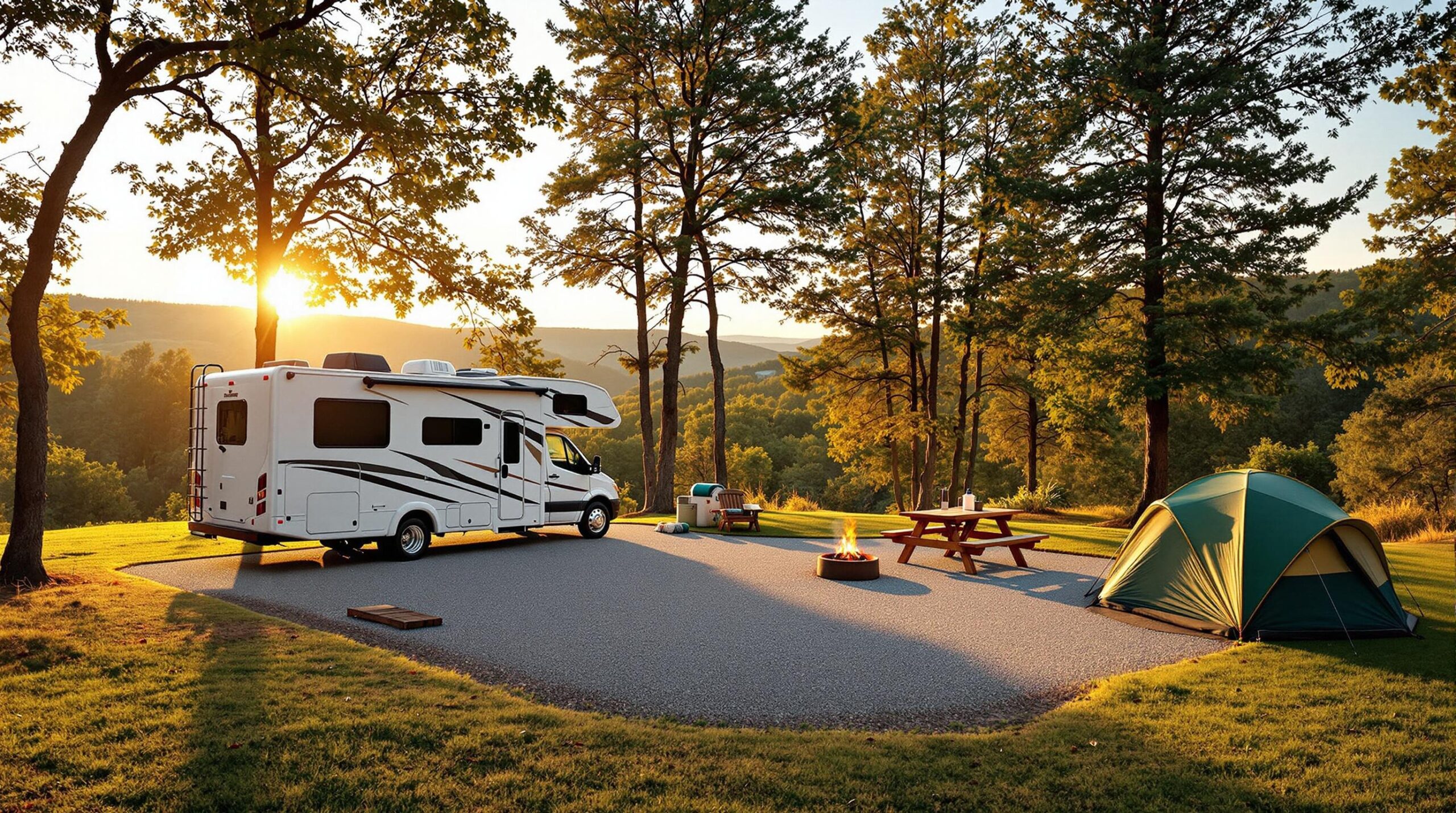The Wilds, a 10,000-acre wildlife conservation center in Cumberland, Ohio, will open the 75-acre Hellbender RV Campground on May 30, 2025, at the intersection of State Route 146 and Zion Ridge Road near its main entrance according to the organization.
For park and resort operators, the move underscores how conservation attractions are adding RV and tent lodging to lengthen visits and lift on-site spending. “The Wilds has always been a place where conservation and adventure come together, and we are incredibly excited to open the Hellbender RV Campground this season,” Dr. Joe Smith, vice president of The Wilds, said in a press release.
The campground will feature 47 full-hookup pads for big rigs and 26 primitive tent sites, each outfitted with a fire ring and picnic table. Two shower houses, a camp store, a playground, a dog park and miles of hiking and biking trails round out the footprint, and overnight guests can bundle discounted Open-Air Safaris during online checkout, according to booking details.
Separating fully serviced pads from minimalist tent areas, clustering retail and play zones at the center and wrapping the perimeter with multi-use trails are proven ways to reduce traffic bottlenecks, boost per-capita retail sales and create a natural buffer between active and quiet zones. Operators who build ancillary experiences—gear rentals, guided hikes, late check-outs—directly into the reservation engine typically see higher pre-arrival upsell rates than post-arrival pitches.
The name honors the eastern hellbender, North America’s largest amphibian and endangered in Ohio, a species The Wilds and the Columbus Zoo have been raising and releasing for more than a decade, according to a naming release.
“We’re thrilled to offer this one-of-a-kind stay that celebrates both nature and adventure,” Genelle Uhrig, director of ecology and conservation science, said.
“The hellbender’s story of resilience reflects our commitment to conservation. We have many beautiful animals at The Wilds, including giraffes, greater one-horned rhinos, Przewalski’s wild horses, to name a few. Now, guests will know more about one of Ohio’s most threatened species and why they are important to our ecosystem,” Uhrig added.
Introducing a species-centric brand gives operators multiple low-cost ways to deepen engagement: QR-code stations and short interpretive loops ensure every camper encounters the hellbender story; laminated talking-points cards help frontline staff fold conservation into daily interactions; and round-up prompts at checkout often deliver double-digit opt-in rates for micro-donations. Mid-week citizen-science slots and school-day programs can further fill shoulder-night occupancy while advancing habitat work.
The project is expected to draw about 35,000 campers annually and cost roughly $7.2 million. Funding comes from the Ohio Department of Natural Resources, Muskingum County, the U.S. Economic Development Administration, the Ohio State Capital Budget grant and private donors to The Wilds Fund.
For developers eyeing large builds in sensitive landscapes, the multi-agency model shows how county, state, federal and private dollars can converge to speed timelines and spread risk.
The Wilds already offers adults-only yurts, lakeside cabins, a lodge and seasonal Outpost tents, alongside safari truck tours, ziplines, horseback rides and fishing safaris—an inventory stack that drives cross-selling and keeps its overall visitation near 120,000 guests a year.
Taken together, the campground’s right-sized utilities, conservation storytelling and diversified funding illustrate a replicable path for owners who want to pair mission impact with overnight revenue growth.
Reservations are open now, and the gates swing wide May 30, 2025. “This is a huge milestone for us,” Smith said.


